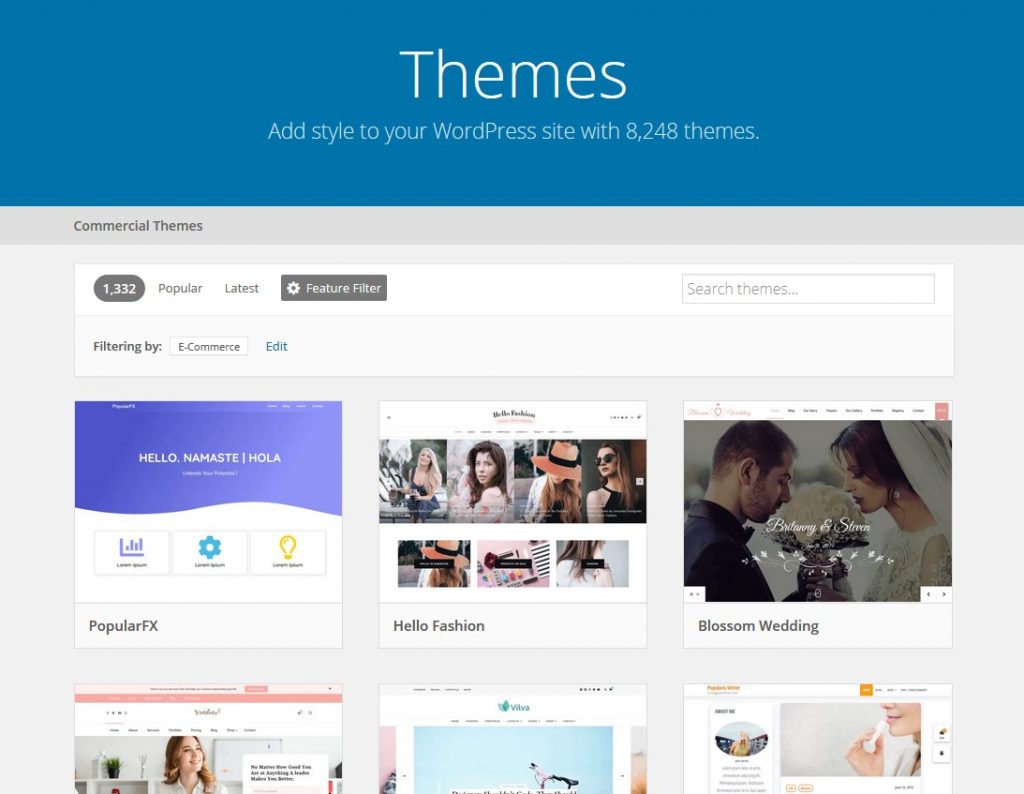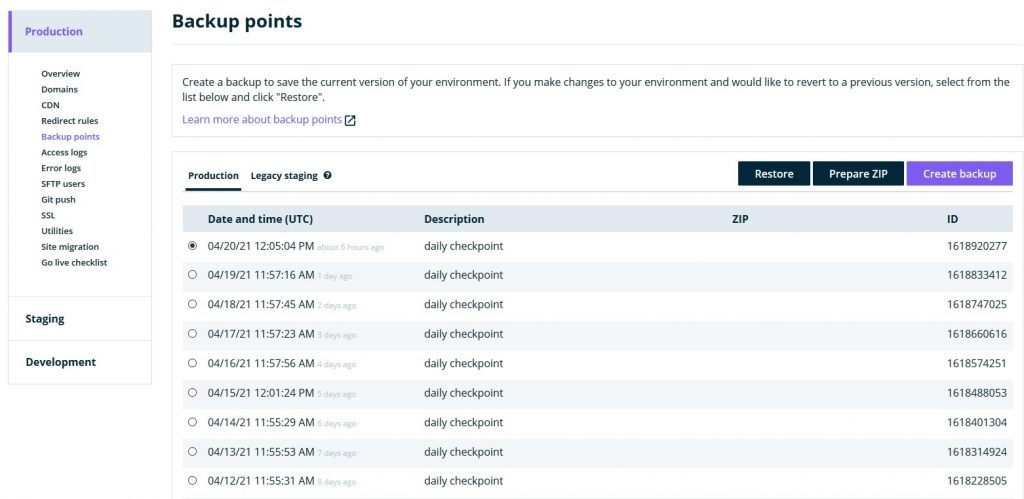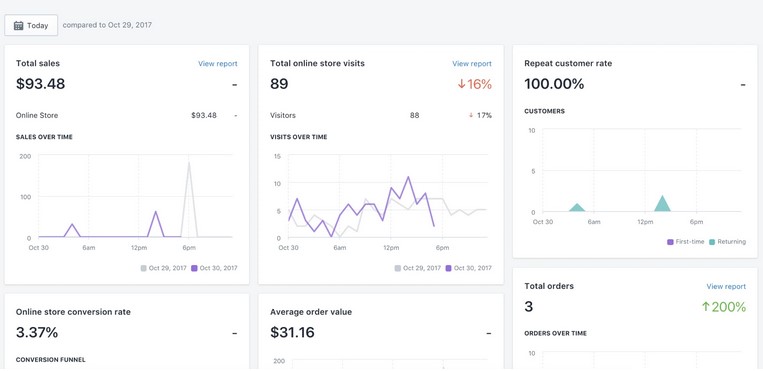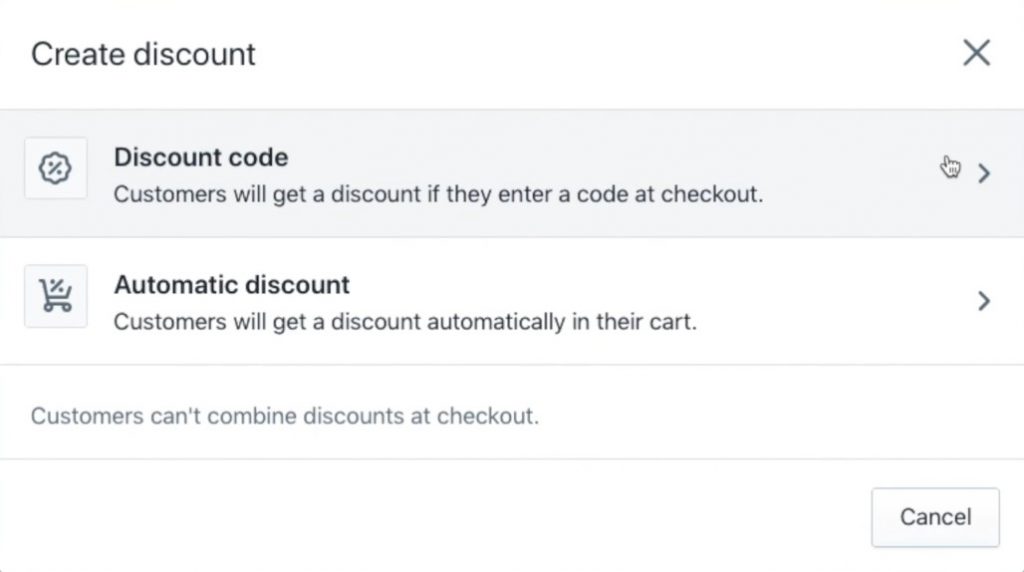Wix vs Shopify vs WooCommerce: Which One To Choose?
E — E-Commerce
Apr 22, 2021
When you decide to run an e-commerce store, the first and most important step is picking the right platform. Wix vs Shopify vs WooCommerce? Which one is better for your business?
Having a number of available options is great, but at the same time, it can be challenging to find the one that fits your business.
In this article, we’ll draw a comparison between three popular e-commerce solutions – Wix vs Shopify vs WooCommerce side by side so that you can see how they stack up against each other. You’ll find a list of different factors important for making the right decision, such as pricing, website security, features, and customer support.
1. Understanding the Basics
This part provides short descriptions of these three platforms to help you understand the concept behind each of them.
Although all three serve a similar purpose – setting up, running, and managing an e-commerce store, their inner workings differ significantly. Knowing what unique features each of them has will make it easier for you to take your pick.
What Is Shopify?
Shopify is a comprehensive, all-in-one e-commerce platform and a website-building tool that offers a simple and seamless way of building, managing, and marketing your online store.

With a wide variety of templates, Shopify allows for advanced customization so that your store can follow your branding requirements.
It’s worth mentioning that this platform is ready-to-use and that it’s a no-brainer choice for those who want an out-of-the-box solution for their e-commerce store – it takes only a couple of minutes to get it up and running.
What Is Wix?
Wix is a beginner-friendly website builder, and, as such, it is highly recommended for people with no coding experience. It comes with drag-and-drop functionality that makes the website-building process extremely easy.
Although it was primarily conceived for content-heavy websites, its e-commerce features allow you to set up an online store in no time.
What Is WooCommerce?
WooCommerce is an open-source e-commerce plug-in for WordPress.
It easily transforms this content management system into a powerful e-commerce platform. If you’re already using WordPress to run your website, then you can easily implement this plug-in without having to build an entire online store from scratch.
When reviewing Shopify vs Wix vs WooCommerce, it’s crucial to pinpoint that we’re talking about three entirely different products. Wix and Shopify are standalone platforms, while WooCommerce works only as an addition to WordPress.
2. Wix vs Shopify vs WooCommerce Themes and Customization Options
Now that we’ve established the difference between these three e-commerce solutions, we can move on to discussing their design and appearance.
Did you know that 38% of people won’t stay on your website for more than a couple of seconds if its content or layout are unattractive?
Given that visual appeal plays an important role when it comes to making sure your e-commerce store is perceived as credible and legit, you should give some thought to the choice of templates and themes that these three solutions provide.
Shopify Themes
The official Shopify website offers 9 free and 64 paid themes, but some of them come in 2 or 3 versions, which significantly increases these numbers. All of them are well-designed, professional-looking, and responsive, meaning that they display properly on all devices regardless of their screen size.
Besides that, you shop for more themes from third-party designers.
Another upside of this dedicated e-commerce platform is that its themes are specifically tailored to be used for online stores, and they’re designed to help you sell.
Finally, you don’t have to worry about the security of your website if you opt for official Shopify themes.
On the downside, these themes come with a hefty price – $180, but this one-time investment is worthwhile if we bear in mind their quality and the fact that they cover a number of different industries.
It’s very important to mention that although Shopify does offer a lot of customization options, it still can’t compare with WooCommerce in this department. The latter boasts a plethora of powerful, free plug-ins. But what’s also worth mentioning is that Shopify allows you to change its functionalities only up to a certain degree, while self-hosted platforms are much more generous when it comes to this, meaning that you can tweak and adjust almost everything.
In other words, if you like to be in control of your e-commerce platform themes, plug-ins, and functionalities, then Shopify might not be what you need, and you should opt for a self-hosted platform offering full-on customization.
Wix Themes
With more than 500 templates, Wix might seem like it’s a much better choice than Shopify, but there’s a catch. Namely, most of these templates haven’t been created with an e-commerce store in mind, although around 60 are.

Another thing that you should take into consideration is that, unlike Shopify, Wix doesn’t allow you to change the template of your store after implementing one.
This might not seem like a big issue at first, but if you decide to rebrand your online store, you can have a problem.
If we put these two deal-breakers aside, Wix does offer a lot in the design and customization department, and what’s even more important, you can easily design your store.
WooCommerce
As for WooCommerce, its design and customization options come with WordPress.
This platform has thousands of templates available, both paid and free, meaning that it’s a winner in this regard. With a massive number of high-quality themes, this platform provides its users with plenty of options to make their e-commerce stores attractive.
But, this advantage comes with a downside – not all the templates are safe, as some of them are laced with malicious code that will hurt the safety of your website. And since you store your customers’ sensitive data, you should be very careful when it comes to the security of your e-commerce store. So, make sure to always download your templates from a reputable source.

Given that businesses need complex filters, custom reports, unusual integrations, or creative and complex account pages, Wix isn’t the best solution because of its limited customization functionality. Even if there is a possibility to make it work, it’s expensive because it requires a number of upgrades.
WooCommerce, for example, offers unparalleled account page customization, and unlike Wix and Shopify, it allows you to both use plug-ins and code this page yourself. And if we bear in mind that the account page is one of the most critical elements of your entire e-commerce website, it’s obvious why you have to pay special attention to it. Namely, it can greatly affect your user experience and that’s why you should make sure that it’s as personalized as possible.
When it comes to unusual integrations, WooCommerce is capable of creating some very complex booking forms, overcoming the issue of product data import that doesn’t come from a common POS system, or implementing interior design room planner tools. Depending on what you need, when comparing the performance of Wix vs Shopify vs WooCommerce in terms of design and appearance, we can conclude that each has its benefits. Wix is tremendously easy to use, while Shopify offers a high level of flexibility when it comes to styling and switching templates. WooCommerce and its abundance of high-quality, professional-looking themes is also a good bargain, but for the best results, think about hiring an expert to handle your e-commerce web design.
3. Website Security
Cybercrime poses a real threat to every online business and should be very wary when it comes to protecting your store. And even more so if we bear in mind that since COVID-19, a 300% increase in cyber attacks has been reported.
Security on the Shopify Platform
Shopify is a respectable e-commerce platform, which means that it handles everything from a technical perspective, including updating security patches, software configuration, or hosting.
However, you can take additional steps to safeguard your store and make sure that both your and your customers’ data is protected against cyber attacks.
Security of Your Wix Website
Given that Wix is a hosted platform, the company is responsible for keeping your website secure and protected.
Just like with Shopify, you should also add different layers of safety to your website by following the best cybersecurity practices.
Security of WooCommerce Plugin
WordPress, being more suited for those who want a more customized solution, requires users to handle all this by themselves or enlist developers for help.
It’s crucial for the stability and security of your WordPress e-commerce store to run the latest version of the software and update your plug-ins and themes regularly.
There are different optimized solutions that will make your life easier, facilitate maintaining your e-commerce store, and keep it secure.
WP Engine, for example, comes with daily encrypted backups, managed core updates and patches, a free, fully-managed content-distribution network, automatic platform updates, threat detection and protection, 24/7/365 support, and auto migration, among many other powerful options.

As for staying on the safe side, Shopify and Wix might seem as if they are easier to handle if you’re not tech-savvy. However, this doesn’t mean that WooCommerce is inferior in this regard, but that you should take a more active role in protecting your e-commerce store. However, if you opt WordPress hosting, you can leave all this to professionals and never worry about the safety and performance of your e-commerce store.
4. Keeping Your E-Commerce Website Updated
This is an important factor that you should take into consideration when choosing an e-commerce solution.
Installing updates on your e-commerce website, adding new features, or changing its design can be critical for the success of your online store. Also, as you expand the number of your products and grow your customer base, it will be necessary to scale your website and implement additional functionalities.

No matter how a particular solution is powerful, you won’t be able to use its full potential if it’s too complex for you to handle.
Wix
As we’ve already mentioned a couple of times, Wix is an excellent platform in terms of its ease of use. You can make changes to your e-commerce store even if you don’t know the first thing about coding and design.
The platform allows you to edit, publish, import, and content pretty straightforwardly, and though the interface is a bit fiddly when it comes to polishing your design, it offers an enviable level of flexibility.
You can also create data back-ups and prevent your live content from errors, data loss, and corruption…
Shopify
Shopify is similarly easy to use and even people who aren’t tech-savvy can find their way around it. Although setting up a store in Shopify can be complex and time-consuming, the platform has an exceptional user experience, while beginners can find a lot of practical tutorials and guides.
It doesn’t provide as much flexibility as Wix when it comes to customizing your layout, but it’s not as fiddly.
WooCommerce
Unlike Shopify, WooCommerce isn’t a hosted solution.
In other words, you’ll have to install this plug-in on your WordPress site, manage updates, make backups, and add features. WordPress comes with a number of plug-ins that facilitate e-commerce store management, while your backups can be made on the server side.
The thing is that WooCommerce is a powerful e-commerce solution that comes with a number of great functionalities, but it requires a hands-on approach to the management of your online store.
That’s why it’s best to hire a WordPress developer in order to make the most of this solution.
If we’re comparing Wix vs Shopify vs WooCommerce in terms of website management, Wix is an obvious winner, but only in terms of ease of use. Shopify might not be the easiest to use, but it surely offers more when we’re talking about scaling your e-commerce store. Finally, WooCommerce allows full control and scaling of your online shop, but it’s suitable for advanced users and those who enlist the help of a WordPress developer.
5. Wix vs Shopify vs WooCommerce Content Management
All these three solutions provide content management functionality, but their usability and effectiveness differ.
Wix
Being created primarily for building content-based websites, Wix offers three different interface options to choose from – Wix Editor, Wix ADI, and Corvid.

With the Wix Editor, you pick a template, structure your website, and then add content.
Wix ADI is powered by AI, which means that this interface creates a customizable website together with images, video, and text, based on what your goal is and what kind of website you’re trying to build.
Corvid gives you access to the platform’s APIs, thus allowing you to customize your website’s functionality additionally. However, this approach requires at least some basic development skills.
Still, this platform leaves a lot to be desired in this department. Namely, its depth of navigation comes with a maximum of two levels, and a third level is a must if you want to manage a website with more than 30 pages.
It’s worth mentioning that Wix allows for only up to 100 static pages, but you can override this limit by using dynamic pages. This brings us to another problem – the text editor struggles to load as the number of pages increase, meaning that your website will be sluggish.
Shopify
Shopify offers a single content management interface, and there are all the options that you might need. It’s worth repeating that this platform was specifically designed for creating e-commerce stores, which is why it maybe isn’t as versatile in terms of content management.
Unlike Wix, in which you create and edit your content in the front end, Shopify requires you to work in the back end, using a simple “WYSIWYG” editor to add and edit content. After that, you use a preview option to check the changes you’ve made before publishing the content.
WooCommerce
35% of all websites work on WordPress, making this platform one of the most powerful content management systems. Given that WooCommerce is operating atop WordPress, it’s evident that you’ll have a plethora of possibilities for managing your content.
The two most popular page builders for WordPress, Elementor and Visual Editor bring a lot of powerful functionalities to the table. Visual Composer is a free, drag-and-drop website builder that comes with both a frontend and backend editing option and a built-in SEO feature. It allows for responsive design, and seamless integrations, while its API makes it possible to create custom content elements.
Similarly, Elementor boasts powerful and yet the easiest UI among all page builders. Its Pro version starts at $49 and unlocks different robust features and functionalities with which you can visually build and customize every element of your e-commerce store and manage it from one place. You can even create advanced animations without coding and take your website to another level.
Again, your choice of e-commerce solution from the perspective of content management depends on your skills. If you’re a beginner or simply want a hassle-free approach, Wix comes first and is followed by Shopify. But WooCommerce really has a lot to offer, but only to those who’re advanced users or are willing to hire a developer.
6. Wix vs Shopify vs WooCommerce Feature Comparison
One of the most important factors when comparing Wix vs Shopify vs WooCommerce is how they stack up against each other in terms of e-commerce features.
Wix
It’s fair to say that Wix isn’t as powerful as Shopify or WooCommerce when it comes to e-commerce features. However, if you plan on running a smaller store, it can be a good start.
The best thing about Wix is the fact that it comes with a number of e-commerce features and functionalities out of the box.
Shopify
This platform really shines in this department, and its in-house and third-party tools and integrations show it. Merchants who want to easily set up their store and have access to dedicated e-commerce functionalities will find Shopify a great, all-in-one solution.
For example, it has advanced SEO options, facilitated POS transactions, multiple currencies, and a mobile app.
WooCommerce
Given that WooCommerce is a dedicated e-commerce plug-in created by WordPress itself, it boasts a wide range of features that can amplify your e-commerce management efforts. Some of them include:
- Support for both physical products and digital downloads
- Easy inventory management
- Support for popular payment gateways
- Automated expense reporting.
Pick Wix if you want a simple, affordable store that you can manage on your own. Shopify and WooCommerce offer more serious features and functionalities, and the latter needs additional tweaking, which means that it’s not exactly suitable for novices.
7. Inventory and Order Management
Streamlined inventory and order management are crucial for e-commerce stores, as you can’t allow yourself to receive orders for items that are out of stock if you don’t want your customer experience to suffer.
Wix
This solution works for smaller stores that don’t have that many products.
You need additional apps if you want to create revenue reports or analyze your stats. Although its inventory and order management functionality is limited, you can still upload multiple products.
Shopify
As you’d expect, Shopify is the real deal here because it comes with a number of features that will help you manage your inventory and orders.
It’s possible to upload single and multiple products, generate reports, monitor analytics, and leverage stock management tools.

Depending on the plan you choose, there’s even a possibility to create action-based triggers, meaning that if your product supplies are running low, the system will automatically email the supplier.
WooCommerce
With a wide variety of inventory management plug-ins available, WooCommerce is a great choice when it comes to this.
The size of your e-commerce store and your budget will be the main factors in deciding which of these solutions to choose from.
8. Checkout Management and Payment Processing
How your e-commerce store handles checkout and payments is very important for your customers. That’s why you need to use the best checkout practices and offer as many payment options as possible.

Wix
Wix comes with an in-house payment provider called Wix Payments.
It supports about 30 gateways, and it’s worth mentioning that this feature isn’t available in all countries, meaning that you will have to use a third-party payment gateway to cover all the regions in which you sell.
It also offers PayPal, Stripe, and Square, and there are no transaction fees for these payment getaways.
Shopify
The popular e-commerce platform supports about 100 payment getaways, together with its Shopify Payments. Transaction fees apply only for their third-party getaways.
Although Shopify offers more options, it’s important to understand that if your customers live outside the USA, UK, Australia, Ireland, Italy, and a couple of other European and Asian countries, they will have to pay transaction fees of up to 2%.
WooCommerce
If you opt for WooCommerce, you’ll also have more than 100 payment gateways available for use.
Just like that’s the case with Shopify, not all of them work in every country. This means that you’ll have to install more than one plug-in, depending on where you sell.
It offers both traditional getaways such as credit cards and alternative options such as PayPal or Stripe.
Wix is clearly limited in this regard, but it’s also more affordable in terms of transaction fees. The other two solutions are similar as both support all major getaways.
9. Discount and Promotion Management
Offering discounts and promotions to your customers is a surefire tactic for boosting your sales.
Wix
As you can already guess, Wix comes with a simple promotion management feature.
However, these discounts can be expressed as a certain amount of money – $10 dollars, and not as a percentage.
Shopify
Shopify offers a fully-fledged discount functionality, which means that you can create regular and automatic discount codes, as well as adding discount codes to abandoned checkout recovery emails.

There are a lot of options, and you can tweak your discount and promotion strategy as you like. Also, with Shopify, a discount doesn’t have to be a specific amount of money only as percentages are available too.
WooCommerce
WooCommerce also offers a number of ways to fine-tune your discounts.
For example, you can restrict your coupons so that only those customers who spend a certain amount of money can get a discount. Similarly, you can set a rule to exclude products that sell well from your coupon campaign and offer only slow-moving items.
Generally speaking, Shopify and WooCommerce offer more than Wix when it comes to discount and promotion management.
10. Search Engine Optimization
In order to make sure your e-commerce store ranks well on Google and other search engines, you need to optimize it properly.

Wix
Wix comes with slim SEO options, as it allows you to create and edit your page titles, meta descriptions, headings, and redirects. This platform basically has an SEO Wizard, but it’s mainly focused on keyword targeting, ranking, and grouping, which is OK only for entry-level optimization. But, if you want a more comprehensive tool that will allow your e-commerce store to outperform your competition, then you should look elsewhere.
Another issue is responsiveness. Although this platform does come with certain responsive elements, the truth is that the result won’t be a fully responsive site. Even when the layout looks good on your screen, there’s a chance that your website won’t display properly on mobile or even desktop screens with a different resolution.
Finally, you should be aware that you can’t pick a server when you’re using Wix, which means that you won’t have full control when it comes to loading speed. Also, instead of using responsive templates like Shopify, Wix comes with a feature called “absolute positioning,” and it positions web elements using a pixel.
Shopify
Shopify outperforms Wix here, mainly when it comes to mobile search.
Its responsive templates adjust well to the screen of any size, which means that your customers will be able to browse and make a purchase from their smartphones too. It should be mentioned that it’s possible to use Accelerated Mobile Pages on Shopify, thus speeding up the delivery of content on mobile devices.
And given that mobile-first indexing is important for SEO, it’s clear that Shopify has a competitive edge.
WooCommerce
This solution is particularly SEO-friendly, and its code is optimized for SEO.
But, what sets it apart from all the other solutions is its integration with WordPress that comes with excellent search engine optimization capabilities. This way, you can take advantage of a highly-effective Yoast plug-in that can help you optimize your content for SEO, even if you aren’t an expert in the field.
In the comparison Wix vs Shopify vs WooCommerce – WooCommerce and Shopify are dominating here, but Wix will also do if you want only some basic SEO.
11. Customer Support
In case you face an issue or a glitch, it’s useful to be able to get in touch with customer support.
Wix
Being a hosted solution, Wix offers customer support, which means that you don’t have to worry if your e-store crashes or you encounter some other problem. You can reach out via email or phone and talk to an agent.
Also, there’s a FAQ section that you can browse.
Shopify
All the above applies to Shopify too, and the only difference is that this solution also offers live chat.
Also, just like Wix, if you want to talk to a Shopify support agent, you have to use a request callback option.
WooCommerce
As WooCommerce is a plug-in on a self-built WordPress website, it doesn’t have standard customer support.
On the other hand, there are user communities and forums where you can look for a solution to a potential problem.
It’s obvious that Wix and Shopify are more user-friendly and, as such suitable for inexperienced, new users.
12. Wix vs Shopify vs WooCommerce Cost-Effectiveness
This is an important point regardless of your budget.
You should identify which of these solutions is the best fit for your e-commerce store based on the review of their features and functionalities.
Wix
As mentioned a couple of times during this article, Wix is a very affordable option, and despite certain shortcomings and limitations, smaller online stores with fewer products will find that it offers the best value for money.
Their e-commerce pricing plan starts at $17 for the Basic package, while Business Unlimited costs $25, and Business VIP $35.
Shopify
Shopify is a serious e-commerce contender and offers a lot for its price.
Its pricing is also straightforward. Namely, this platform offers three different pricing plans and a 14-day free trial:
- Basic Shopify at $29 a month
- Shopify at $79 a month
- Advanced Shopify at $299 a month.
WooCommerce
When it comes to WooCommerce, you should consider that its flexibility and diversity come with a heftier price tag, although WordPress is free.
But, don’t forget that you’ll have to invest in different plug-ins and add-ons if you want to transform your website into an e-commerce store.
These expenses include:
- Hosting
- Templates for your website
- E-commerce integrations, that is, tools with which you’ll be able to sell online
- Plug-ins that will add different e-commerce functionalities to your store.
Before you make a decision, take all the additional expenses that, for example, WooCommerce requires. Sometimes using the basic plan won’t get you more bang for your buck, so don’t try to cut corners here. Although Wix and Shopify might come across as more cost-effective at first, the expenses quickly add up as you implement more plug-ins. Don’t be surprised if the final price ends up somewhere in the vicinity of $1,000 a month for running a Wix or Shopify e-commerce store with all the necessary extensions.
If we compare Wix vs Shopify vs WooCommerce against each other, it’s important to highlight that each one of them is suitable for a particular audience. Wix is affordable and easy to use, and it’s modest in terms of certain features and functionalities, which makes it a perfect solution for those who don’t want to invest too much or run smaller e-commerce stores. Shopify is significantly more advanced since it’s specifically geared towards the e-commerce industry, and it still isn’t demanding in terms of ease of use.
Those who need a big store that can be scaled but don’t want any hassle should opt for Shopify. Finally, WooCommerce offers the greatest level of flexibility and customization, but it can be on the expensive side if you opt for custom development. It’s a good option for those who are proficient in terms of web development or have a budget to hire developers.
